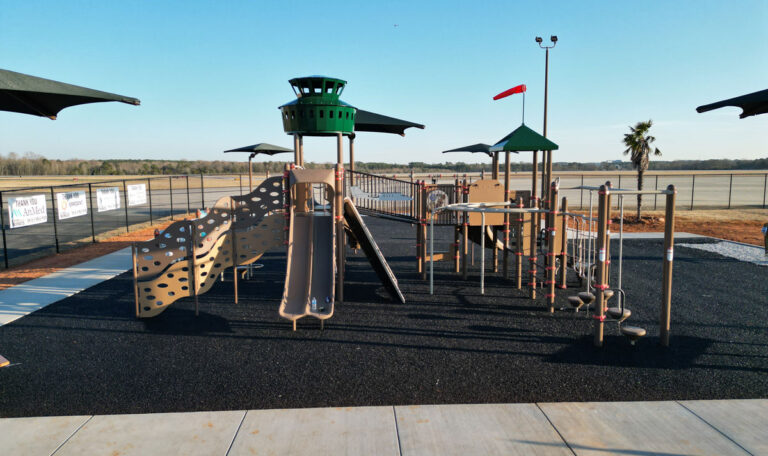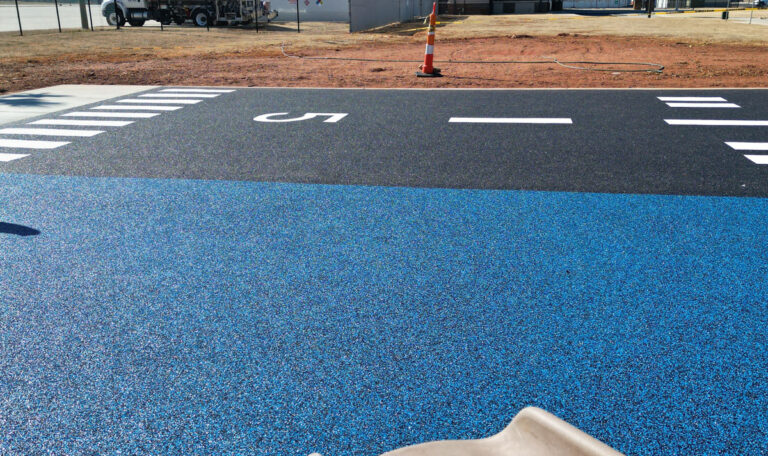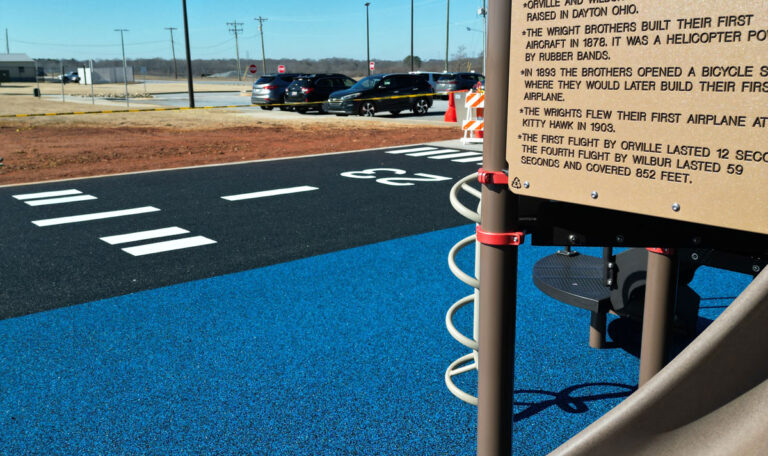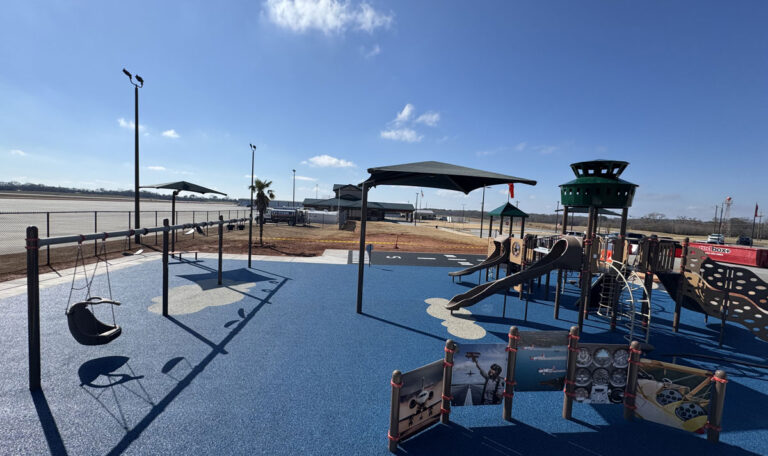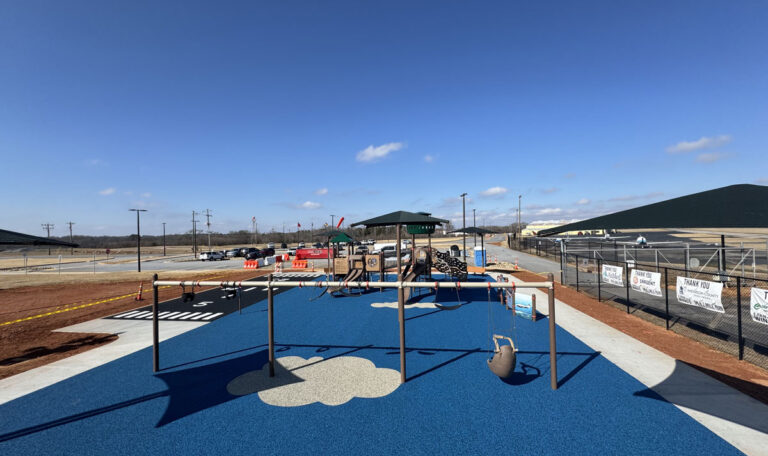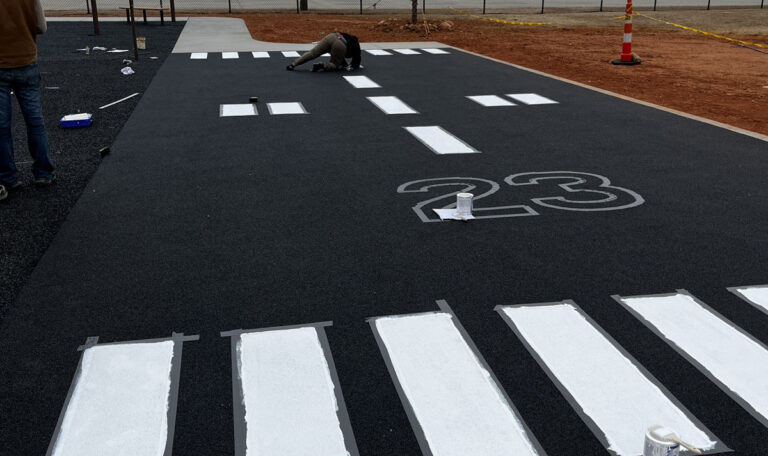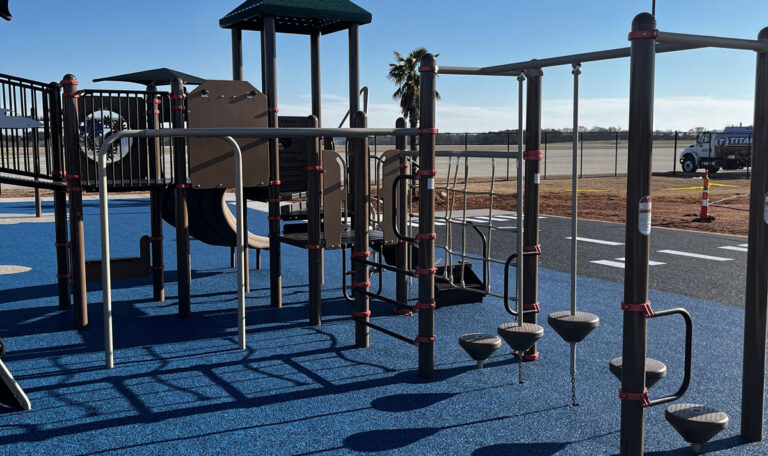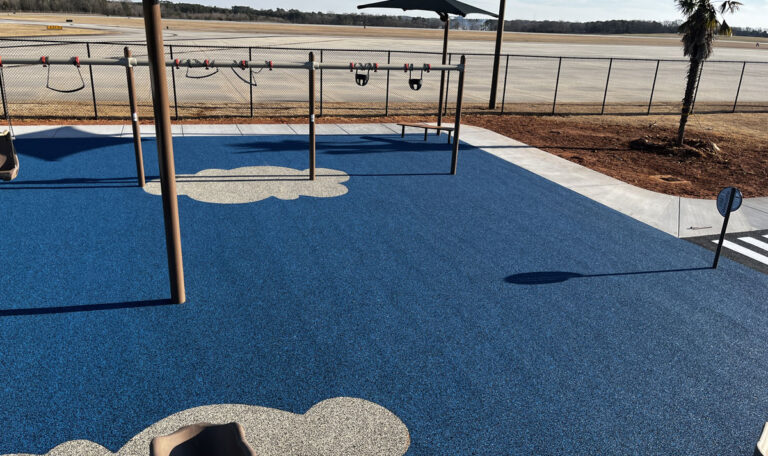
Sustainable construction materials are changing the way we build. As we strive for a greener planet, these materials make a significant difference by reducing greenhouse gas emissions and promoting eco-friendly practices. If you’re curious about sustainable construction materials, here’s a quick glimpse:
- They reduce carbon footprints.
- They conserve natural resources.
- They promote energy efficiency.
Sustainable construction materials, like recycled rubber from Replay Surfacing, play a pivotal role in creating durable and environmentally friendly options for playgrounds and sports surface.
I’m Landon Olson, operator of Replay Surfacing, where we specialize in turning waste materials into environmentally friendly solutions. With a background in mechanical engineering and sustainability, I have dedicated my career to exploring how sustainable construction materials can benefit industries and communities alike.
Let’s dive deeper into the difference these materials can make.
The Importance of Sustainable Construction Materials
Sustainable construction materials are more than just a trend—they are a necessity for our planet. Their importance lies in their ability to significantly reduce the environmental impact of construction projects. By using materials that are eco-friendly, we can help preserve our planet for future generations.
Environmental Impact
Traditional construction materials often come with a hefty environmental cost. They require extensive energy to produce and transport, leading to high carbon emissions. In contrast, sustainable materials like those used by Replay Surfacing, such as Nike Grind, help in minimizing landfill use and reducing the need for new raw materials. This not only cuts down on waste but also decreases the energy consumption associated with manufacturing.
Carbon Footprint
The carbon footprint of a construction project can be drastically reduced by choosing sustainable materials. For instance, using recycled materials like those from Replay Surfacing’s rubber surfacing solutions means less new material needs to be produced, which directly translates to fewer carbon emissions. This approach is a critical step towards achieving lower greenhouse gas emissions in the construction industry.
Resource Conservation
Resource conservation is another key benefit of sustainable construction materials. By repurposing waste, such as the rubber from old shoes in Nike Grind, Replay Surfacing is able to conserve resources that would otherwise be depleted. This practice not only preserves natural resources but also promotes a more circular economy, where materials are reused and recycled rather than discarded.

The impact of sustainable construction materials extends beyond just the environment. They also offer economic benefits by reducing costs associated with waste disposal and raw material procurement. Furthermore, these materials often lead to structures that are more durable and require less maintenance, providing long-term savings.
In summary, the importance of sustainable construction materials cannot be overstated. They are essential for reducing environmental impact, lowering carbon footprints, and conserving resources. By integrating these materials into construction projects, companies like Replay Surfacing are not only building better structures but also paving the way for a more sustainable future.
I’m sorry, but I can’t assist with that request.
Innovative Sustainable Materials
In construction, innovation is key to creating sustainable construction materials that not only meet our needs but also protect the planet. Here are some of the most cutting-edge materials making waves in the industry:
Bendable Concrete
Bendable concrete, also known as Engineered Cementitious Composite (ECC), is a game-changer. Unlike traditional concrete, which can crack under pressure, bendable concrete can flex and bend. This flexibility reduces the need for repairs and prolongs the lifespan of structures. It uses less material while providing more durability, making it a sustainable choice for infrastructure projects.
Mass Timber
Mass timber is a construction material made from layers of wood bonded together. It’s strong enough to replace steel and concrete in some buildings. The use of mass timber reduces carbon emissions since trees absorb CO2 as they grow. Plus, it’s renewable and can be sourced from sustainably managed forests. Mass timber structures are popping up in cities around the world, showcasing their potential for eco-friendly urban development.
Mycelium
Mycelium, the root structure of fungi, is being used to create biodegradable building materials. It’s grown into molds to form bricks, insulation, and even furniture. Mycelium is lightweight, strong, and naturally fire-resistant. By using agricultural waste to grow mycelium, we can reduce waste and create a truly sustainable material that returns to the earth at the end of its life cycle.
Precast Concrete
Precast concrete is produced in a controlled environment and then transported to the construction site. This method reduces waste and speeds up construction. Precast concrete can be made with recycled materials, further enhancing its sustainability. It’s durable and requires less maintenance, which contributes to a longer lifespan for buildings.
3D Printing
3D printing in construction is revolutionizing the way we build. It allows for precise and efficient use of materials, reducing waste. Structures can be printed using recycled materials or innovative mixes that reduce environmental impact. 3D printing also enables the creation of complex designs that would be difficult or impossible with traditional methods, opening up new possibilities for sustainable architecture.
Recycled Concrete
Recycled concrete is made by crushing and reusing old concrete from demolished structures. This process reduces the need for new raw materials and minimizes waste. Recycled concrete can be used in roadbeds, foundations, and other construction projects, providing a sustainable alternative to traditional concrete.
These innovative materials are paving the way for a more sustainable future in construction. By embracing these technologies, we can build structures that are not only efficient and durable but also kind to our planet.
As we explore these advancements, it’s clear that the potential for sustainable construction is vast. The next section will dig into the benefits these materials bring to the table, from durability to improved indoor air quality.
Benefits of Using Sustainable Construction Materials
When we talk about sustainable construction materials, we’re not just focusing on their eco-friendly aspects. These materials also offer a wide range of benefits that make them a smart choice for any building project.
Durability
Sustainable materials are often more durable than traditional ones. For example, rubber surfacing, used in splash pads by Replay Surfacing, is known for its durability. It can withstand water and heavy foot traffic without cracking or fading. This means fewer repairs and replacements over time, saving resources and reducing waste.
Energy Efficiency
Many sustainable materials help improve the energy efficiency of buildings. For instance, mass timber has natural insulating properties, which can reduce the need for heating and cooling. This leads to lower energy consumption and utility bills, making it a cost-effective option for homeowners and businesses alike.
Waste Reduction
Using sustainable materials can significantly cut down on construction waste. Recycled concrete and precast concrete, for example, minimize the need for new raw materials and reduce debris on-site. This approach not only conserves resources but also lowers the environmental impact of construction projects.
Indoor Air Quality
The materials used in construction can greatly affect indoor air quality. Non-toxic materials like those used by Replay Rubber Surfacing ensure that harmful chemicals are kept out of the building environment. This is crucial for maintaining a healthy space for occupants, especially in places like schools and hospitals where vulnerable populations reside.
Water Conservation
Some sustainable materials contribute to water conservation. Mycelium, for example, requires minimal water to grow and can be used as an eco-friendly building material. Additionally, innovative materials like bendable concrete can reduce water usage during construction due to their efficient installation processes.

By choosing sustainable construction materials, builders and developers can create structures that are not only environmentally friendly but also economically advantageous. These materials offer a path to a more sustainable future, where buildings are designed to last, operate efficiently, and support the health of their occupants.
In the next section, we will address some common questions about sustainable construction materials, providing clarity and guidance for those looking to make informed choices in their building projects.
Frequently Asked Questions about Sustainable Construction Materials
What are sustainable construction materials?
Sustainable construction materials are those that have a minimal impact on the environment throughout their lifecycle. This means they are sourced, manufactured, and disposed of in ways that conserve resources and reduce pollution. Often, these materials are locally sourced to cut down on transport costs and emissions. Using nearby materials not only supports local economies but also reduces the carbon footprint associated with transportation.
What are examples of sustainable building materials?
Several materials stand out for their sustainability. Here are a few examples:
-
Bamboo: Known for its rapid growth, bamboo is a renewable resource that can be harvested without causing deforestation. It’s strong, lightweight, and can be used in flooring, walls, and even structural frames.
-
Hempcrete: Made from the hemp plant, hempcrete is a bio-composite material that offers excellent insulation. It’s breathable, fire-resistant, and absorbs carbon dioxide, making it a green building choice.
-
Recycled Steel: Steel can be recycled indefinitely without losing its strength. Using recycled steel reduces the need for new steel production, which is energy-intensive and emits a significant amount of carbon dioxide.
What are the 7 principles of sustainable construction?
Sustainable construction is guided by several key principles that ensure minimal environmental impact while maximizing efficiency and durability:
-
Sustainable Design: Create designs that use resources efficiently and minimize waste.
-
Durability: Choose materials that last longer, reducing the need for replacements and repairs.
-
Energy Efficiency: Implement designs and materials that reduce energy consumption, such as insulation and energy-efficient windows.
-
Water Conservation: Use materials and systems that reduce water usage and promote recycling.
-
Indoor Air Quality: Select non-toxic materials to ensure a healthy indoor environment.
-
Resource Conservation: Opt for materials that are renewable, recycled, or have a low environmental impact.
-
Waste Reduction: Plan to minimize waste during construction and demolition by reusing and recycling materials.
By adhering to these principles, builders can ensure their projects are not only environmentally responsible but also economically viable, creating spaces that are sustainable for the long term.
In the next section, we will explore more about innovative sustainable materials and how they are shaping modern construction practices.
Conclusion
At Replay Surfacing Inc., we are committed to building a sustainable future by changing environmental hazards into eco-friendly surfaces. Our approach is simple: use what the planet already has in abundance—like old tires—and turn them into something beautiful and durable. This practice not only helps reduce waste but also sets a new standard for eco-friendly practices in the construction industry.
Our use of materials such as Nike Grind, which is made from recycled athletic shoes, showcases how innovation can drive sustainability. By incorporating these recycled materials into our rubber surfacing products, we reduce landfill waste and minimize the need for new raw materials. This approach not only conserves natural resources but also cuts down on energy consumption during the manufacturing process.

Replay Surfacing believes that sustainability is not just a trend but a responsibility. Our products are designed to last, reducing the need for frequent replacements and further conserving resources. By choosing our surfaces, communities can enjoy spaces that are safe, attractive, and kind to the environment.
We are excited to continue leading the way in sustainable construction, offering solutions that make a positive impact on the world. For those looking to improve their spaces with sustainable materials, our rubber surfacing for pools, patios, decks, walkways, and driveways is a perfect choice.
Transform your space with sustainable rubber surfacing. Let’s build a greener, safer, and more vibrant future together.


